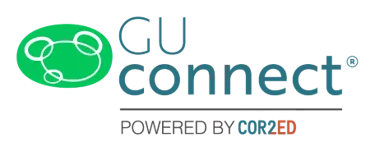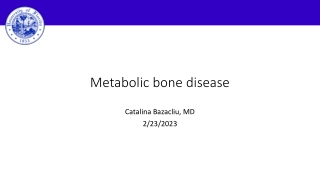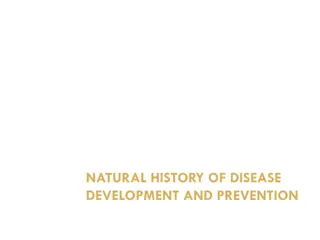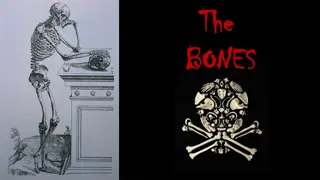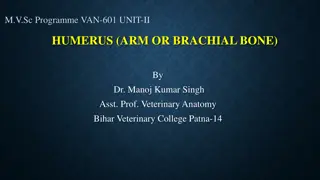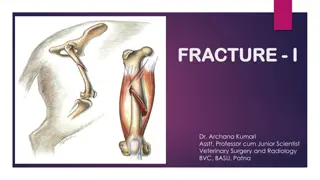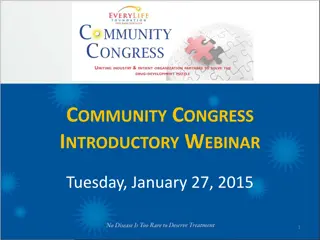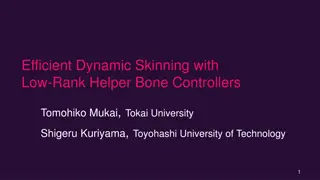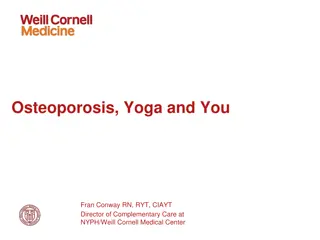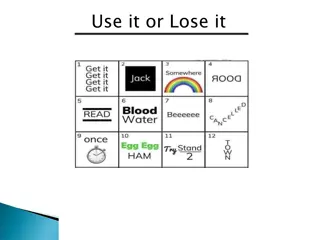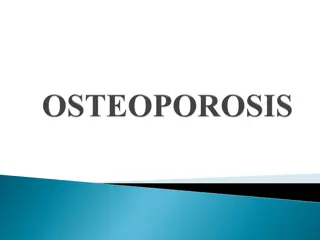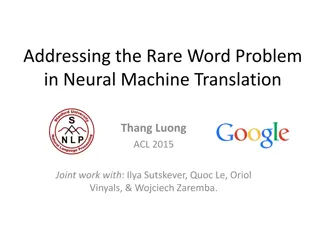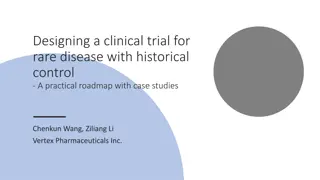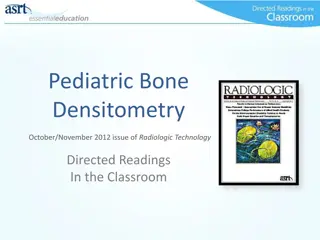Rare Bone Disease Research Highlights from ASBMR 2021
Explore the latest findings and insights in rare bone diseases presented by experts like Dr. Kassim Javaid and Dr. Zulf Mughal at ASBMR 2021. This independent educational programme focuses on translating research into clinical practice, raising awareness, and improving early diagnosis globally. Watch videos, review slides, and take the assessment quiz to enhance your knowledge in this field.
Download Presentation

Please find below an Image/Link to download the presentation.
The content on the website is provided AS IS for your information and personal use only. It may not be sold, licensed, or shared on other websites without obtaining consent from the author. Download presentation by click this link. If you encounter any issues during the download, it is possible that the publisher has removed the file from their server.
E N D
Presentation Transcript
Please use COR2ED template throughout this programme is not part of a CONNECT group ASBMR 2021 RARE BONE DISEASE HIGHLIGHTS Dr. Kassim Javaid Nuffield Centre of Orthopaedics, University of Oxford, Oxford, UK Dr. Zulf Mughal Manchester University NHS Foundation Trust, Manchester, UK Prof. Oliver Semler Children s Hospital, Department of Rare Skeletal Diseases in Childhood University Hospital Cologne, Germany Assoc. Prof. Marelise Eekhoff Amsterdam University Medical Centers, VUMC, The Netherlands Dr. Eric Rush Children s Mercy, Kansas City, MO, USA November 2021 This content is supported by an Independent Educational Grant from Ipsen, Kyowa Kirin & Ultragenyx The programme is therefore independent; the content is not influenced by the supporter and is under the sole responsibility of the experts. START COURSE >
LEARNING OBJECTIVES This e-learning course are: To highlight the latest research in rare bone diseases from the ASBMR 2021 annual meeting To translate the latest research in rare bone diseases into the context of daily clinical practice To raise awareness of rare bone diseases with global health care professionals to help improve early diagnosis and referral to centres of excellence
ASBMR 2021 RARE BONE DISEASE HIGHLIGHTS Watch the x minute video Note: podcast 3x, approx 20mins Vimeo Link
ASBMR 2021 RARE BONE DISEASE HIGHLIGHTS Review the accompanying slides using the link below before taking the assessment quiz Screen shot of slide(s)
Assessment Quiz 1 question for every 5 minutes of learning You will be able to obtain your certificate and CME credit allocation by achieving a pass mark of 80% You may wish to brief Multiple Choice Questions into the e-learning agency as an accompanying word document for inclusion in the SCORM file
QUESTION 1 ASTEROID was a phase 2b dose-finding study investigating the effects of setrusumab in patients with which rare bone disease? Select the correct answer A. Fibrodysplasia Ossificans Progressive B. Osteogenesis Imperfecta C. Autosomal dominant hypocalcaemia type 1 D. X-Linked Hypophosphataemia 7
QUESTION 1: ASTEROID was a phase 2b dose-finding study investigating the effects of setrusumab in patients with which rare bone disease? INCORRECT CORRECT A. Fibrodysplasia Ossificans Progressive B. Osteogenesis Imperfecta Correct. The ASTEROID study investigated the effects of setrusumab in patients with osteogenesis imperfecta Incorrect. The ASTEROID study investigated the effects of setrusumab in patients with osteogenesis imperfecta C. Autosomal dominant hypocalcaemia type 1 Incorrect. The ASTEROID study investigated the effects of setrusumab in patients with osteogenesis imperfecta D. X-Linked Hypophosphataemia Incorrect. The ASTEROID study investigated the effects of setrusumab in patients with osteogenesis imperfecta 8
QUESTION 2 Which statement is correct regarding the treatment burosumab? Select the correct answer A. It is a human antibody against FGF23 B. It is an antagonist of CaSR C. It is a pan-anti-TGF- -antibody D. It is a human monoclonal antibody that inhibits sclerostin 9
QUESTION 2 Which statement is correct regarding the treatment burosumab? INCORRECT CORRECT B. It is an antagonist of CaSR A. It is a human antibody against FGF23 Incorrect. Burosumab is a recombinant fully human monoclonal antibody against FGF23 Correct. Burosumab is a recombinant fully human monoclonal antibody against FGF23 C. It is a pan-anti-TGF- -antibody Incorrect. Burosumab is a recombinant fully human monoclonal antibody against FGF23 D. It is a human monoclonal antibody that inhibits sclerostin Incorrect. Burosumab is a recombinant fully human monoclonal antibody against FGF23 10
QUESTION 3 Based on data presented at ASBMR 2021, which genetic test should be considered as a routine part of clinical practice in the future workup of unclear rickets? Select the correct answer A. ENPP-1 B. ACVR1 C. PHEX D. COL1A1 11
QUESTION 3 Based on data presented at ASBMR 2021, which genetic test should be considered as a routine part of clinical practice in the future workup of unclear rickets? INCORRECT CORRECT B. ACVR1 A. ENPP-1 Incorrect. Data presented by Rutsch et al, at ASBMR 2021 suggest ENPP1 deficiency should be considered as differential diagnosis in cases of rickets-like symptoms without alterations of vitamin D or phosphate levels. Therefore, genetic testing for ENPP1-deficiency should therefore be used as a routine part of clinical practice in the future in the workup of unclear rickets Correct. Data presented by Rutsch et al at ASBMR 2021 suggest ENPP1 Deficiency should be considered as differential diagnosis in cases of rickets-like symptoms without alterations of vitamin D or phosphate levels. Therefore, genetic testing for ENPP1- deficiency should therefore be used as a routine part of clinical practice in the future in the workup of unclear rickets C. PHEX Incorrect. Data presented by Rutsch et al, at ASBMR 2021 suggest ENPP1 deficiency should be considered as differential diagnosis in cases of rickets-like symptoms without alterations of vitamin D or phosphate levels. Therefore, genetic testing for ENPP1-deficiency should therefore be used as a routine part of clinical practice in the future in the workup of unclear rickets D. COL1A1 Incorrect. Data presented by Rutsch et al, at ASBMR 2021 suggest ENPP1 deficiency should be considered as differential diagnosis in cases of rickets-like symptoms without alterations of vitamin D or phosphate levels. Therefore, genetic testing for ENPP1-deficiency should therefore be used as a routine part of clinical practice in the future in the workup of unclear rickets 12
QUESTION 4 Which treatment was investigated in the MOVE trial for the treatment of Fibrodysplasia Ossificans Progressive (FOP)? Select the correct answer A. Burosumab B. Setrusumab C. Palovarotene D. Encaleret 13
QUESTION 4 Which treatment was investigated in the MOVE trial for the treatment of Fibrodysplasia Ossificans Progressive (FOP)? INCORRECT CORRECT A. Burosumab C. Palovarotene Incorrect. The MOVE trial (NCT03312634) was an efficacy and safety study of palovarotene for the treatment of Fibrodysplasia Ossificans Progressive Correct. The MOVE trial (NCT03312634) was an efficacy and safety study of palovarotene for the treatment of Fibrodysplasia Ossificans Progressive B. Setrusumab Incorrect. The MOVE trial (NCT03312634) was an efficacy and safety study of palovarotene for the treatment of Fibrodysplasia Ossificans Progressive D. Encaleret Incorrect. The MOVE trial (NCT03312634) was an efficacy and safety study of palovarotene for the treatment of Fibrodysplasia Ossificans Progressive 14
QUESTION 5 In the XLH Disease Monitoring Program (XLH-DMP), which indicators of psychological burden were greater for adults with X-linked hypophosphatemia compared to children? Select the correct answer A. Depression B. Anxiety C. Insomnia D. All of the above 15
QUESTION 5 In the XLH Disease Monitoring Program (XLH-DMP), which indicators of psychological burden were greater for adults with X-linked hypophosphatemia compared to children? INCORRECT CORRECT A. Depression Incorrect. In the XLH-DMP study there was a higher prevalence of depression (14.8% vs 0.7%), anxiety (12.1% vs 4.5%) and insomnia (7.7% vs 1.0%) in adults with XLH than in children D. All of the above Correct. In the XLH-DMP study there was a higher prevalence of depression (14.8% vs 0.7%), anxiety (12.1% vs 4.5%) and insomnia (7.7% vs 1.0%) in adults with XLH than in children B. Anxiety Incorrect. In the XLH-DMP study there was a higher prevalence of depression (14.8% vs 0.7%), anxiety (12.1% vs 4.5%) and insomnia (7.7% vs 1.0%) in adults with XLH than in children C. Insomnia Incorrect. In the XLH-DMP study there was a higher prevalence of depression (14.8% vs 0.7%), anxiety (12.1% vs 4.5%) and insomnia (7.7% vs 1.0%) in adults with XLH than in children 16
QUESTION 6 In the study presented by Zhou et al, at ASBMR 2021, approximately 50% of atypical femur fracture patients had clinically suspected monogenic bone disorders, what proportion of these were genetically confirmed? Select the correct answer A. 1/4 B. 1/3 C. 1/2 D. 2/3 17
QUESTION 6 In the study presented by Zhou et al, at ASBMR 2021, approximately 50% of atypical femur fracture patients had clinically suspected monogenic bone disorders, what proportion of these were genetically confirmed? INCORRECT CORRECT A. 1/4 B. 1/3 Incorrect. 1/3 were genetically confirmed, supporting the hypothesis of a genetic cause of AFF Correct. 1/3 were genetically confirmed, supporting the hypothesis of a genetic cause of AFF C. 1/2 Incorrect. 1/3 were genetically confirmed, supporting the hypothesis of a genetic cause of AFF D. 2/3 Incorrect. 1/3 were genetically confirmed, supporting the hypothesis of a genetic cause of AFF 18
ASSESSMENT QUIZ RESULTS Congratulations! Congratulations on passing the assessment quiz. Please return to the course homepage to get the certificate. Your CME credit Dashboard will then be updated.
ASSESSMENT QUIZ RESULTS You didn t pass this time! Please retry the assessment quiz or return to the course to learn more.
Ipsen, Kyowa Kirin and Ultragenyx For details of expert disclosures please return to the Scientific Committee information accessible via the course home page
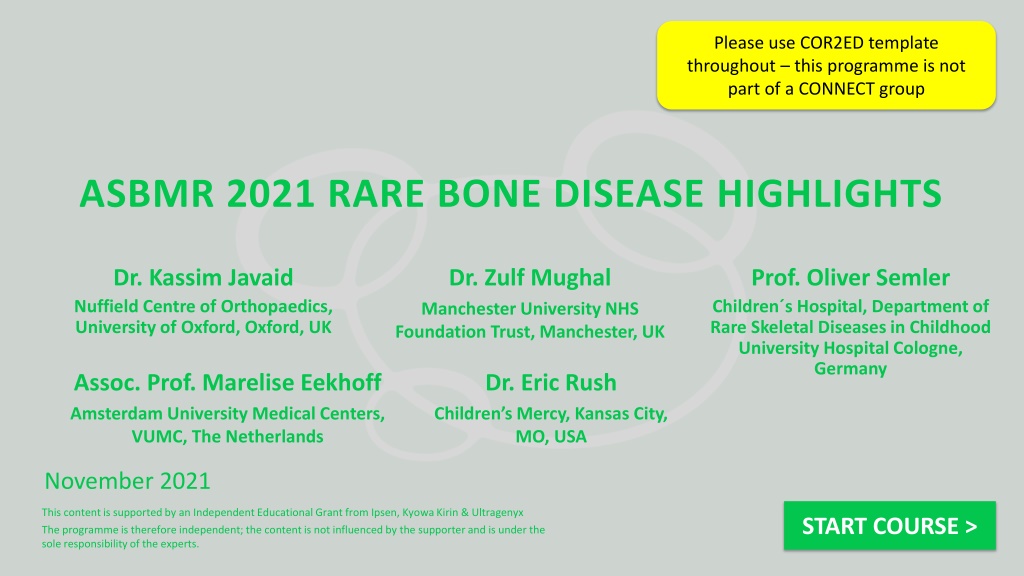
 undefined
undefined




